Succulent, pan-seared salmon gets a vibrant upgrade with this easy Salmon Piccata recipe, coated in a tangy lemon-caper butter sauce. This one-pan dish is ready in 15-minutes. A luxurious yet weeknight-friendly recipe that rivals any Italian restaurant!

Table of Contents

If you’re a fan of classic chicken piccata, this salmon version offers a luxurious seafood twist that’s just as quick and crowd-pleasing. The sauce clings to every nook of the salmon, making each forkful irresistible.
Lightly dusting flour on the salmon fillets creates a delicate golden crust when seared, locking in moisture while adding a subtle crispness that contrasts beautifully with the velvety lemon-caper sauce. This simple step ensures each bite is perfectly balanced. And because everything comes together in one pan, you’ll build layers of flavor effortlessly.
After searing the salmon (in batches if needed), it rests under foil to stay juicy while you whip up the sauce in the same skillet, scraping up those flavorful browned bits for extra depth.
Serve it over pasta, rice, or roasted vegetables for a meal that feels elegant while coming together in 15-minutes. Once you try it, you’ll understand why piccata is a timeless favorite – and why salmon might just be its best iteration yet!

- Salmon – Look for firm, fresh center-cut filets with pinkish-orange hue and moist (not slimy!) flesh and a clean scent. Frozen filets work just as well – just thaw them fully in the fridge and pat them dry before dusting them with flour.
- Flour – Lightly coating the salmon in a thin layer of all-purpose flour creates a delicate, golden crust when seared and helps thicken the sauce slightly too.
- Unsalted butter – Mixed with the olive oil to pan sear the salmon and also to brown the garlic and add richness to the lemon butter caper sauce.
- Olive oil – Mixed with the butter to cook the salmon.
- Garlic – Sautéing garlic in butter unlocks its sweet, nutty depth, which melds with the capers’ briny brightness to create a sauce that’s both richly aromatic and vibrantly balanced.
- Dry white wine – A dry white like Sauvignon Blanc, Pinot Grigio, or Chardonnay brings acidity, brightness, and depth to the sauce. If you need to skip the wine, replace it with more chicken broth and an extra splash of lemon juice.
- Chicken broth – Low-sodium chicken broth is used as the liquid base of the sauce. Sub vegetable broth to keep things pescatarian.
- Cornstarch – Whisking cornstarch into a little extra broth creates a slurry, which helps thicken the sauce just enough to cling to the salmon without turning gluey.
- Lemon juice – Adds fresh citrus aroma to the sauce and pairs beautifully with the capers.
- Capers – These bring the salty, briny bursts you’d expect from classic piccata. If the capers straight from the jar are too intense, quickly rinse them under running water to wash away the extra brine.
- Parsley – Add minced flat-leaf parsley into the sauce for a pop of color and a herbaceous finish.
- Kosher salt and black pepper – To season the salmon fillets and to add to the sauce towards the end, if needed.
How to make it

Step 1
Prep the salmon
- Pat the fillets thoroughly dry with paper towels to ensure a crisp sear.
- Season both sides generously with salt and pepper.
- Place the flour in a shallow dish. Dredge each fillet lightly in the flour, shaking off any excess to avoid clumping.

Step 1
Sear the salmon
- Heat a combination of butter and olive oil in a large nonstick skillet over medium-high heat until the butter is foaming but not browned.
- Carefully add the salmon fillets, ensuring they are not crowded.
- Sear undisturbed for 3-4 minutes per side, or until golden brown and cooked to your desired doneness.
- Transfer the cooked fillets to a platter and tent loosely with foil to keep them warm.

Step 3
Make the sauce
- Reduce the heat to medium and melt additional butter in the same skillet.
- Add the garlic and sauté until fragrant and lightly golden.
- Deglaze the pan with the dry white wine, scraping up any browned bits from the bottom.
- Add the lemon juice and broth, then increase the heat to medium-high.
- Simmer until the liquid reduces slightly (about 5 minutes).

Step 4
Thicken the sauce
- In a small bowl, whisk the cornstarch with reserved broth until smooth.
- Pour the cornstarch slurry into the skillet and cook for 1 minute, stirring constantly, until the sauce thickens slightly.
- Remove the skillet from the heat and whisk in the remaining butter until melted and glossy.
- Stir in the capers and parsley, then taste and adjust seasoning with salt and pepper.

Step 5
Serve
- Return the salmon fillets to the skillet, turning them over gently to coat evenly with the sauce.
- Plate the salmon immediately over your choice of rice, pasta, or vegetables, drizzling with extra sauce.
Perfecting the lemon caper sauce
Want to know how to make perfect lemon caper sauce every time? Whether you’re making chicken piccata, scallop piccata, shrimp paccata, or cod piccata, this sauce is the key to the success of your dish. Here are my best tips to make an irresistible lemon caper sauce:
- This butter-based sauce is meant to be smooth and creamy, not browned. Be patient and melt the butter over low heat to prevent it from overcooking.
- If the sauce is too thick, you can thin it out by stirring in a splash of chicken broth or dry white wine. Taste the sauce before serving to ensure the flavors are still balanced.
- If the sauce is too thin, whisk in more cornstarch slurry. Start with a little, then add more as needed.
- Adjust the flavor of this sauce as desired. Add more lemon juice for tanginess, butter for richness, and capers for saltiness.
Tips and tricks
- Pat the salmon fillets dry with paper towels before seasoning. Any excess moisture prevents a crust from developing when pan seared.
- Don’t crowd the skillet. Arrange the fillets in a single layer with space between each fillet so that they cook without steaming. Cook them in batches, if needed.
- To keep the cooked salmon fillets warm, transfer them to a plate and tent them loosely with foil until ready to add them to the sauce in the skillet for serving.
- Serve this salmon piccata immediately. These salmon fillets are best enjoyed right out of the pan with the lemon caper sauce while they’re still warm.
- Achieve the perfect consistency for the sauce by mixing in a cornstarch slurry once the liquid ingredients have reduced over heat. Combining the cornstarch with broth instead of water prevents diluting the flavor of the sauce.
- Use center-cut salmon fillets which are thick, even-sized portions taken from the middle section of the salmon. These fillets are great for their uniform thickness, which ensures even cooking, making them ideal for pan-searing.
- Salmon is perfectly cooked when it flakes easily with a fork but still appears slightly translucent in the center, reaches an internal temperature of 145°F, and feels firm yet springy to the touch.
- Be gentle with the salmon when it’s placed back in the pan. If your fillets feel too delicate to flip, use a spoon to gently bathe each piece in the sauce to help them stay intact.
- A light dusting of flour is all you need for these salmon fillets – just enough to crisp the exterior and help the sauce cling, without creating a thick or gummy crust. Shake off any excess before cooking.

Serving suggestions
Enjoy this salmon piccata as an elegant dinner with these 45+ Sides for Salmon or pair it with the following of my top picks:
Storing
- Store leftover salmon piccata in an airtight container in the fridge for up to 2 days. Store the sauce and salmon together to keep the fillets moist and flavorful.
- To reheat without overcooking the salmon, slowly warm it in a skillet over low heat until heated through. Add a splash of broth or water to loosen the sauce and keep the fillets from drying out.
- I don’t recommend freezing leftover salmon piccata as the texture of the fillets and sauce is likely to change.
If you loved this salmon piccata recipe, I would appreciate it so much if you would leave a ⭐️star review⭐️! Also, be sure to snap a picture of your finished dish and share it with me on Instagram using the hashtag #platingsandpairings and tagging me @platingsandpairings.
For more great Platings & Pairings recipes, be sure to follow me on Pinterest, Facebook, YouTube, Twitter, and TikTok.

Full Recipe
Salmon Piccata
Equipment
Ingredients
- 1 pound salmon filets
- ½ cup flour
- 3 Tablespoons butter (unsalted, divided)
- 1 Tablespoon olive oil
- 4 cloves garlic (thinly sliced)
- ⅓ cup dry white wine
- 1 cup chicken broth (low-sodium, divided)
- 1 teaspoon cornstarch
- 3 Tablespoons fresh lemon juice
- 3 Tablespoons capers (drained)
- 2 Tablespoons fresh flat-leaf parsley (minced )
- Kosher salt and pepper
Instructions
- Pat the fillets dry and season both sides of all pieces with salt and pepper.
- Add the flour to a shallow dish; dredge the salmon in the flour to evenly coat. Shake off excess.
- Heat 1 TBSP butter and olive oil in a large nonstick pan or skillet over medium-high heat.
- Sear the fillets in the pan until cooked through (approximately 3-4 minutes per side) then set aside on a platter lightly tented with foil. Do not crowd the salmon fillets in the pan. Work in batches, using a bit more olive oil and butter as required for each batch.
- Reduce the heat to medium and melt 1 TBSP. of the butter in the pan. Add the garlic and cook until golden brown, about 30 seconds. Add the wine, lemon juice and ¾ cup broth, increase the heat to medium-high and cook until the liquid is slightly reduced, about 5 minutes, scraping any browned bits from the bottom of the skillet.
- Whisk cornstarch together with the reserved ¼ cup broth. Pour the mixture into the pan and cook for 1 minute or until slightly thickened. Remove from heat.
- Whisk in the remaining 1 TBSP butter, the capers and parsley. Season with salt and pepper. Place the salmon fillets back into the pan, gently turning each fillet to evenly coat in the sauce.
- Serve immediately over rice, pasta or vegetables.
Notes
- Store leftover salmon piccata in an airtight container in the fridge for up to 2 days. Store the sauce and salmon together to keep the fillets moist and flavorful.
- To reheat without overcooking the salmon, slowly warm it in a skillet over low heat until heated through. Add a splash of broth or water to loosen the sauce and keep the fillets from drying out.
- I don’t recommend freezing leftover salmon piccata as the texture of the fillets and sauce is likely to change.
- Pat the salmon fillets dry with paper towels before seasoning. Any excess moisture prevents a crust from developing when pan seared.
- Don’t crowd the skillet. Arrange the fillets in a single layer with space between each fillet so that they cook without steaming. Cook them in batches, if needed.
- To keep the cooked salmon fillets warm, transfer them to a plate and tent them loosely with foil until ready to add them to the sauce in the skillet for serving.
- Serve this salmon piccata immediately. These salmon fillets are best enjoyed right out of the pan with the lemon caper sauce while they’re still warm.
- Achieve the perfect consistency for the sauce by mixing in a cornstarch slurry once the liquid ingredients have reduced over heat. Combining the cornstarch with broth instead of water prevents diluting the flavor of the sauce.
- Use center-cut salmon fillets which are thick, even-sized portions taken from the middle section of the salmon. These fillets are great for their uniform thickness, which ensures even cooking, making them ideal for pan-searing.
- Salmon is perfectly cooked when it flakes easily with a fork but still appears slightly translucent in the center, reaches an internal temperature of 145°F, and feels firm yet springy to the touch.
- Be gentle with the salmon when it’s placed back in the pan. If your fillets feel too delicate to flip, use a spoon to gently bathe each piece in the sauce to help them stay intact.
- A light dusting of flour is all you need for these salmon fillets – just enough to crisp the exterior and help the sauce cling, without creating a thick or gummy crust. Shake off any excess before cooking.
- Dairy-free salmon piccata – Use extra olive oil or dairy-free butter instead of butter. Your sauce will lose some richness, but the final dish will still be delicious.
- Gluten-free salmon piccata – Coat the salmon in rice flour, almond flour, or a 1:1 gluten-free flour blend. Skip anything too dense (like coconut flour).
- Try another type of fish – This salmon piccata recipe will definitely work with cod, and should also work just as well with another mild, flaky white fish like halibut, haddock, grouper, or tilapia.





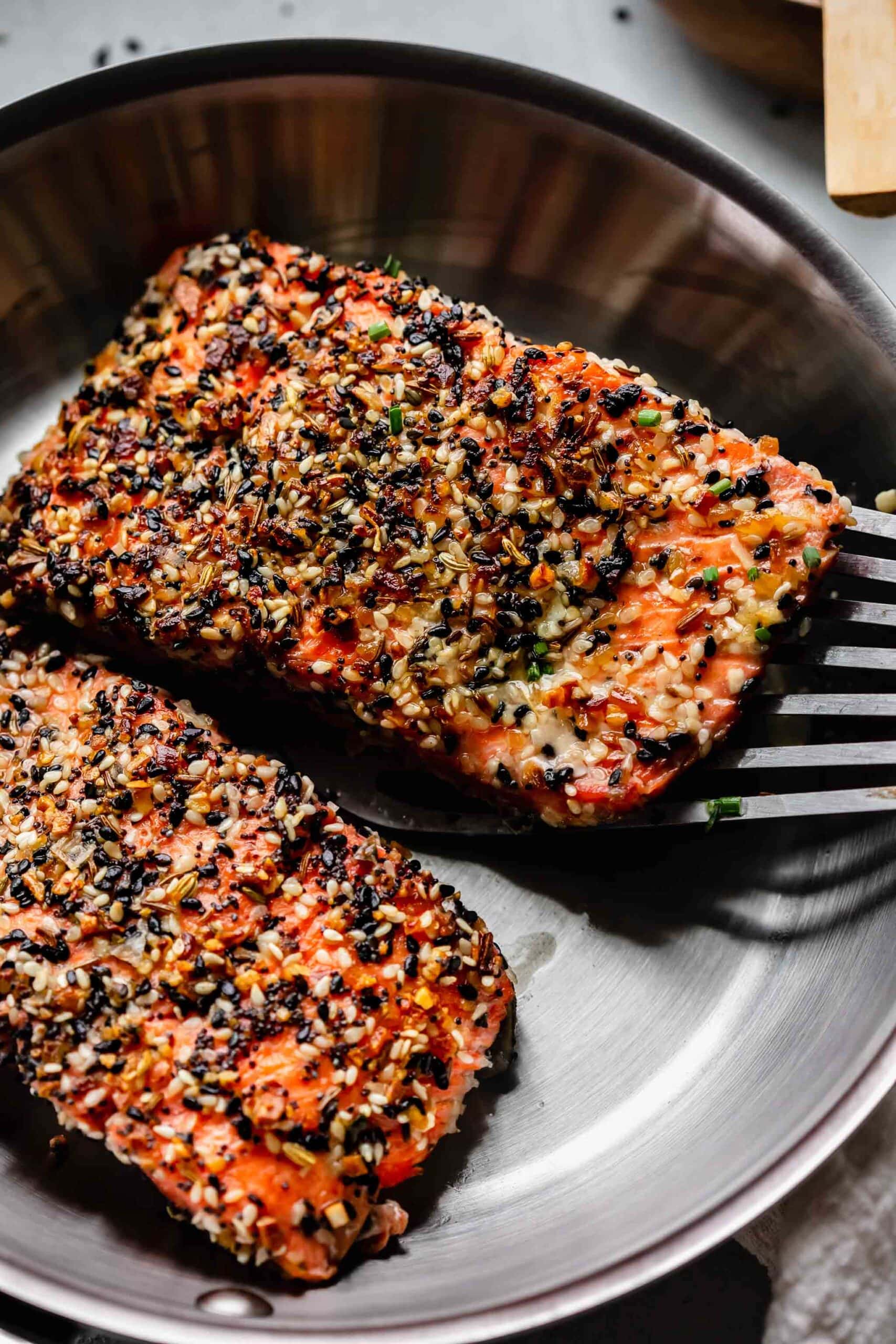

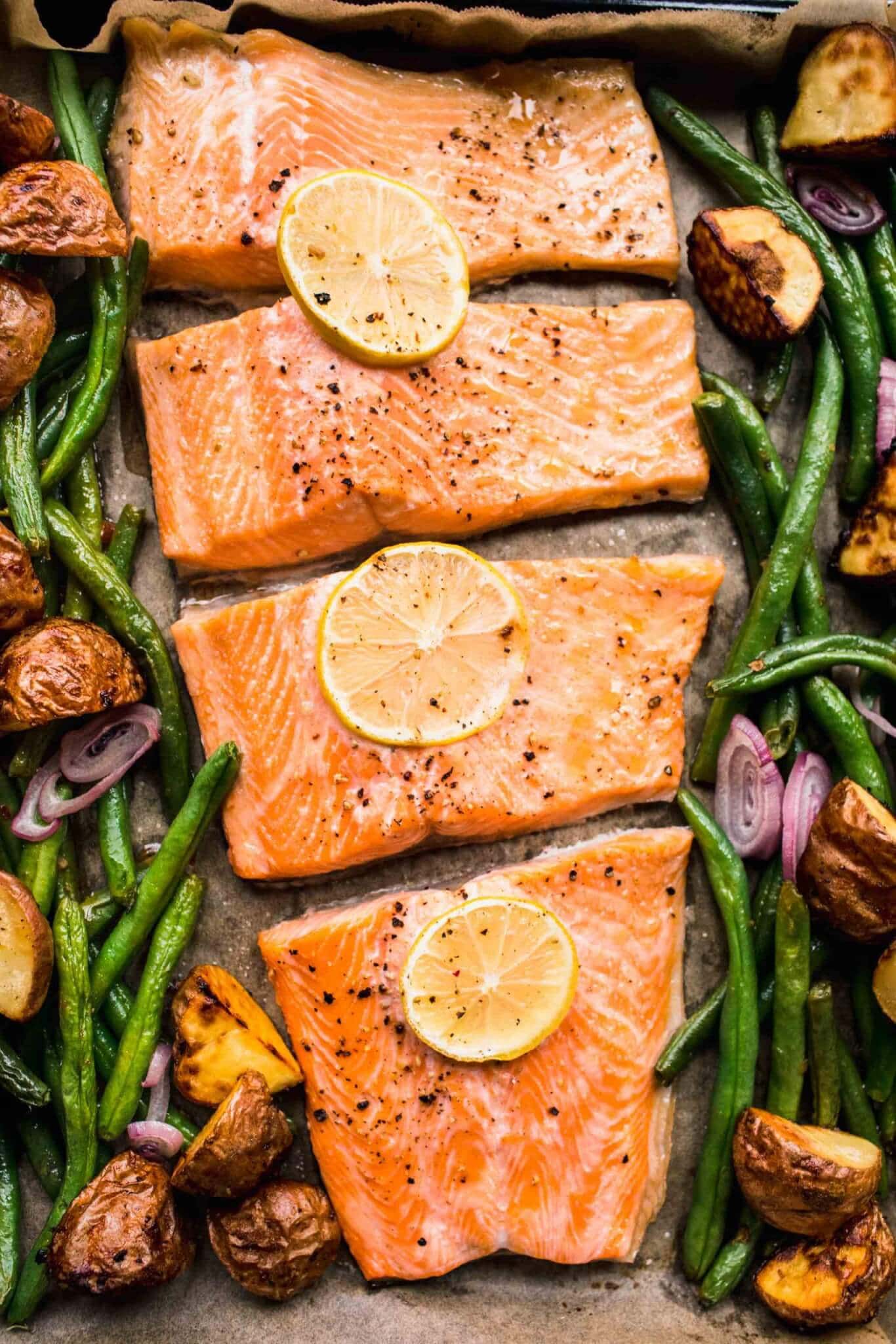




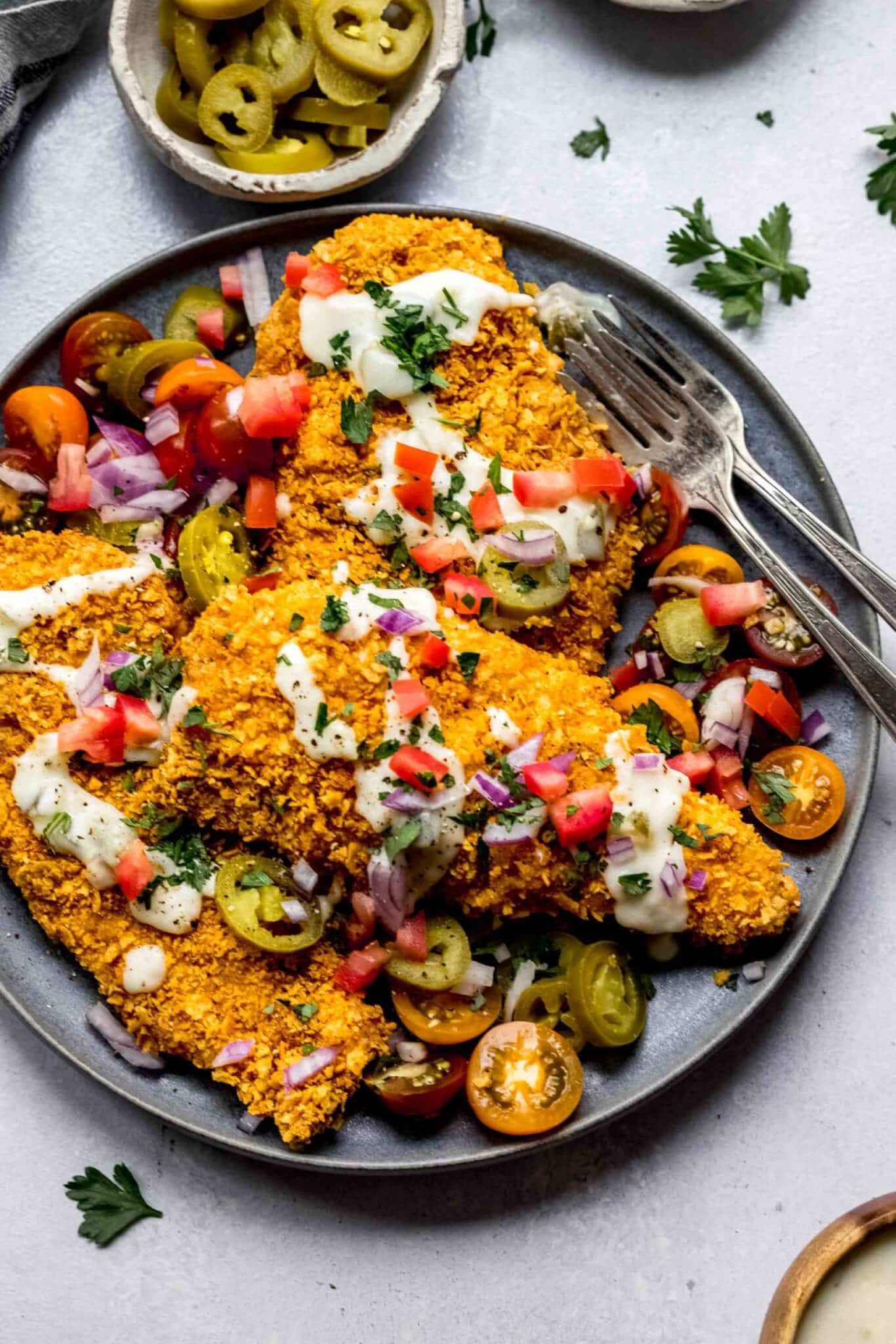
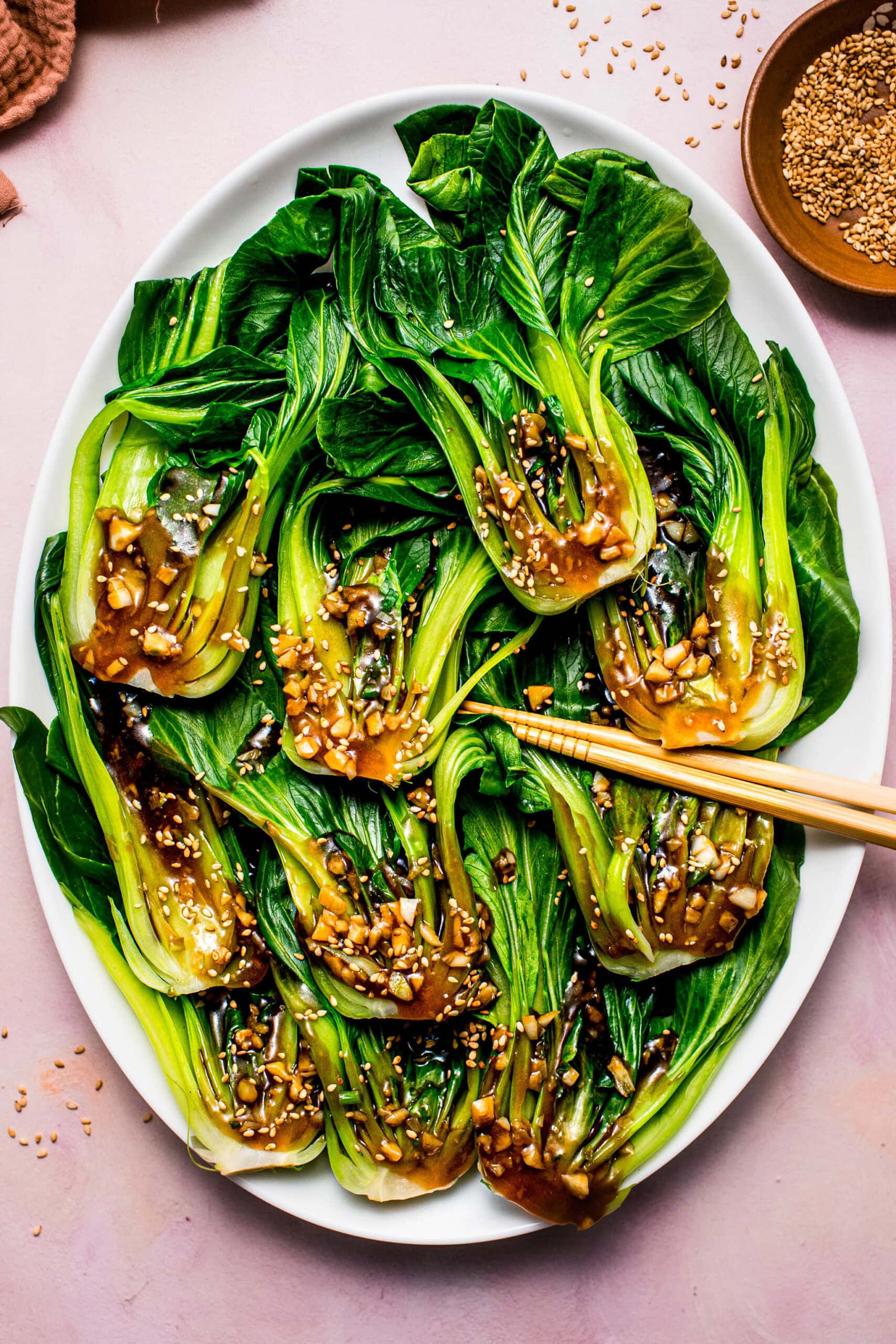


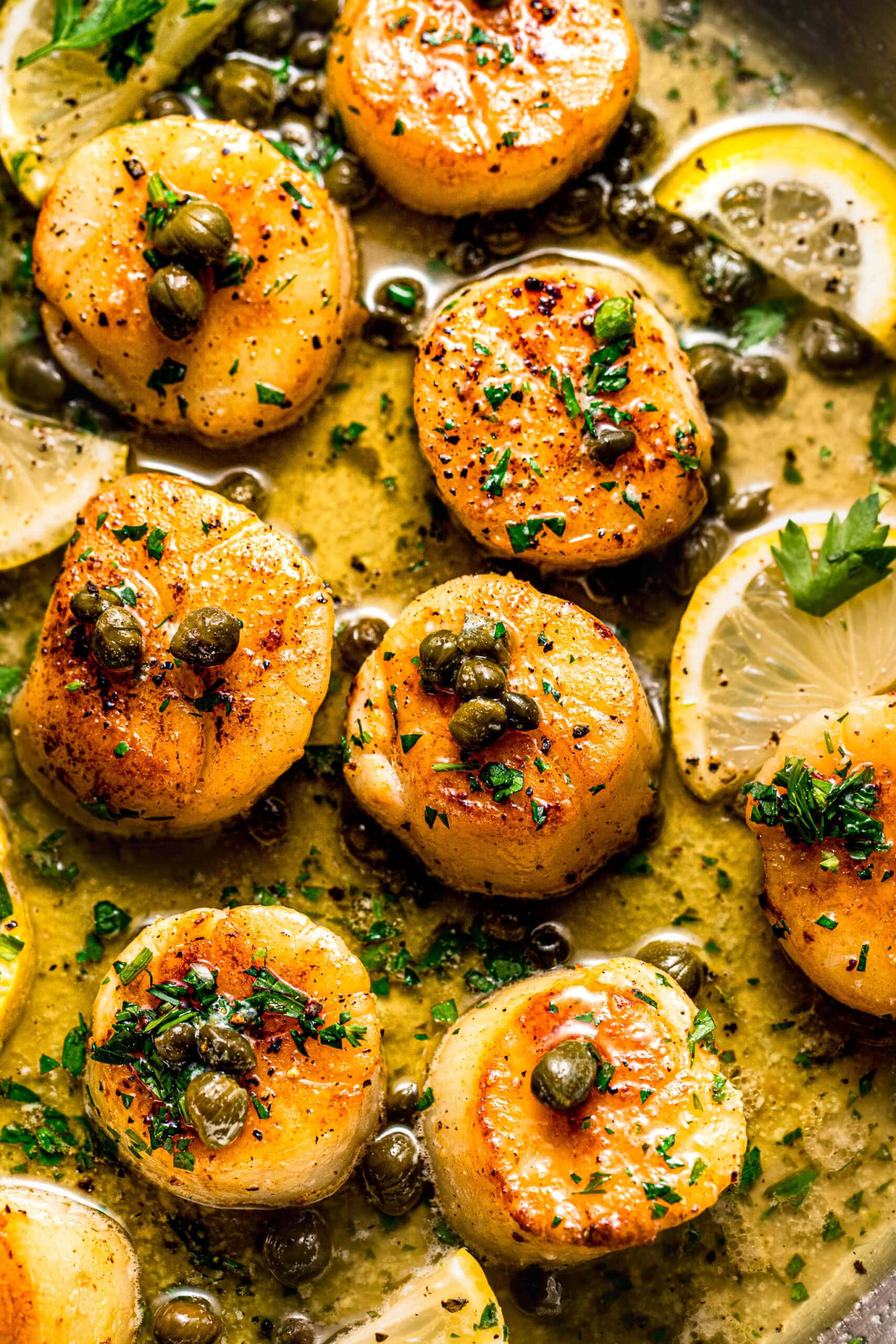

Leave a Reply